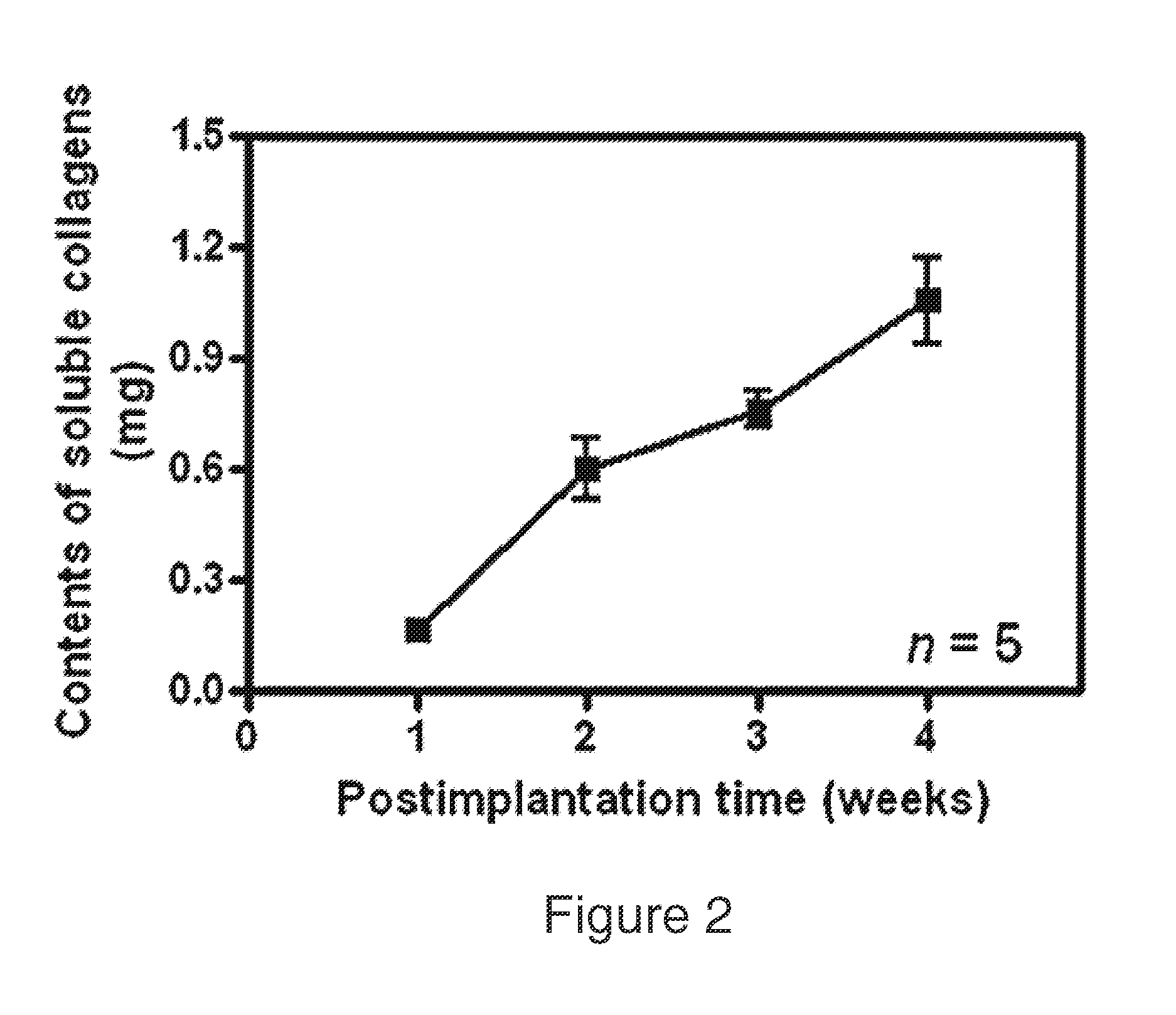Directed stem cell recruitment
a stem cell and recruitment technology, applied in the field of tissue engineering, can solve the problems of extremely limited current treatment options for renal failure, and achieve the effect of reducing or eliminating the need for donor cell procuremen
- Summary
- Abstract
- Description
- Claims
- Application Information
AI Technical Summary
Benefits of technology
Problems solved by technology
Method used
Image
Examples
example 1
Methods and Materials
Normal Mouse Model
[0096]All animal procedures were performed in accordance with a protocol approved by the institutional Animal Care and Use Committee (ACUC) at Wake Forest University. CD1 mice (6-8 weeks) were purchased from Charles River Laboratories Inc. (Wilmington, Mass.). Under anesthesia using isoflurane, the kidneys were accessed through a dorsal incision and then collagen gels were injected into kidneys. Mice were divided into three experimental groups (n=20 per time point). The following treatments were administered via multiple injections into both kidneys using a 22-gauge needle: (1) collagen gel (0.2% wt / vol, 50 μL / kidney), (2) saline (0.9% NaCl, 50 μL / kidney, Hospira, Inc, Lake Forest, Ill.), and (3) needle sticks only. Sham operation served as a control. The kidneys were harvested at 1, 2, 3, and 4 weeks after injection for histological and immunohistochemical analyses.
Collagen Gel Preparation
[0097]Rat tail type I collagen solution was obtained fr...
example 2
Scaffold Implantation
[0129]The PGA nonwoven scaffolds consisted of highly porous fiber mesh disks. The retrieved scaffolds at 1, 2, 3 and 4 weeks showed a progressive tissue ingrowth over time. Cell recruitment after implantation was measured by gross morphology and SEM microphotograph. By the fourth week, the implants were completely encapsulated by a connective tissue capsule with abundant host vasculature. Neovascularization was observed in and around the scaffold. Examination of the retrieved implants with scanning electron microscopy (SEM) clearly demonstrated a classic foreign body reaction. The porous scaffold became populated with collagen-producing cells and the interfiber spaces were filled with increasing amounts of collagenous matrix when measured by SEM microphotographs each week after implantation for 4 weeks. Observations after implantation, noted extracellular matrix material gradually filled in the porous architecture of the scaffold.
example 3
Cellular Component Measurement
[0130]Measurement of cell density within the scaffold was achieved by histomorphometry and DNA content analyses (FIG. 1). DNA analysis, performed using a standard extraction kit, confirmed the typical host cellular response. Cell infiltration increased steadily in the first three weeks, followed by a slight decline as matrix production increased by the fourth week. These results were confirmed by histomorphometry, where the average cell counts of representative H&E stained sections showed a similar pattern.
PUM
| Property | Measurement | Unit |
|---|---|---|
| concentration | aaaaa | aaaaa |
| pressure | aaaaa | aaaaa |
| viscosity | aaaaa | aaaaa |
Abstract
Description
Claims
Application Information
 Login to View More
Login to View More - R&D Engineer
- R&D Manager
- IP Professional
- Industry Leading Data Capabilities
- Powerful AI technology
- Patent DNA Extraction
Browse by: Latest US Patents, China's latest patents, Technical Efficacy Thesaurus, Application Domain, Technology Topic, Popular Technical Reports.
© 2024 PatSnap. All rights reserved.Legal|Privacy policy|Modern Slavery Act Transparency Statement|Sitemap|About US| Contact US: help@patsnap.com










